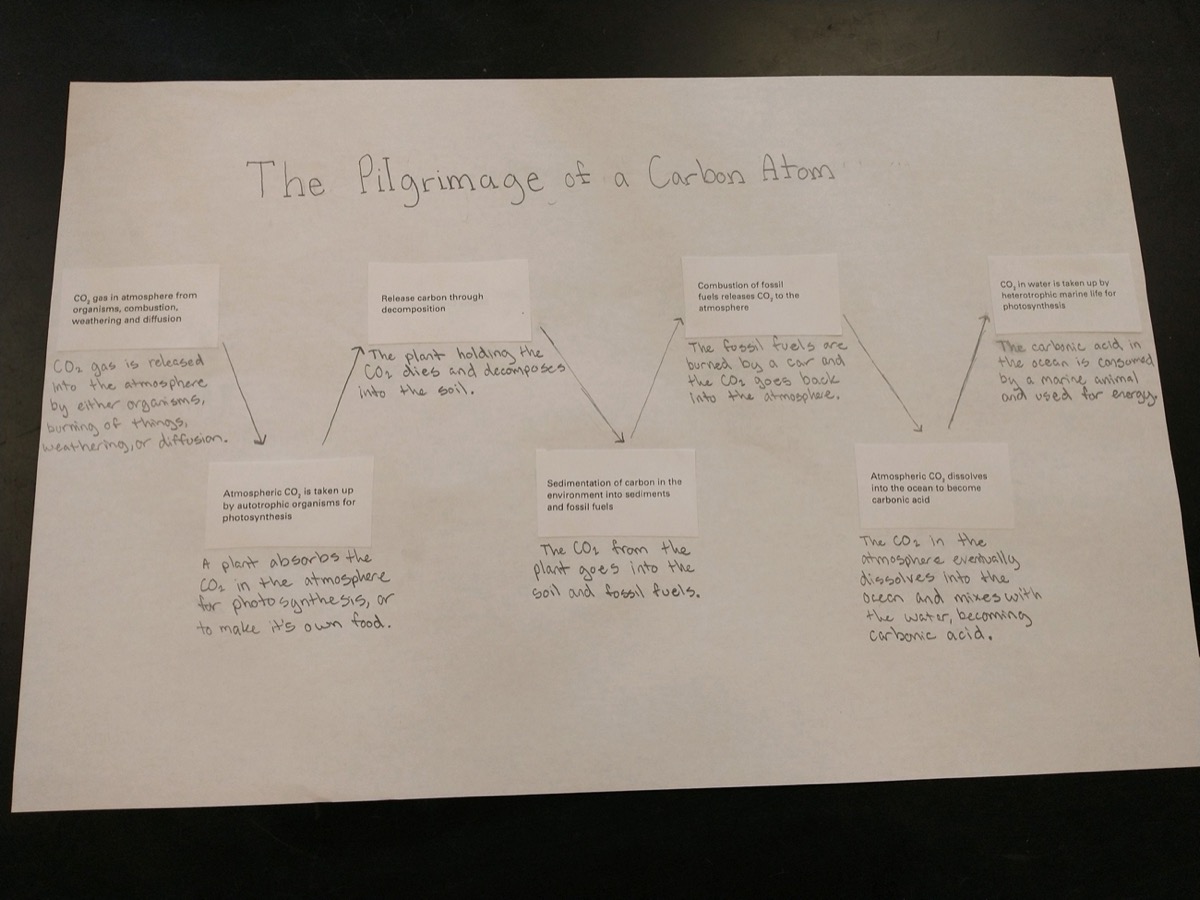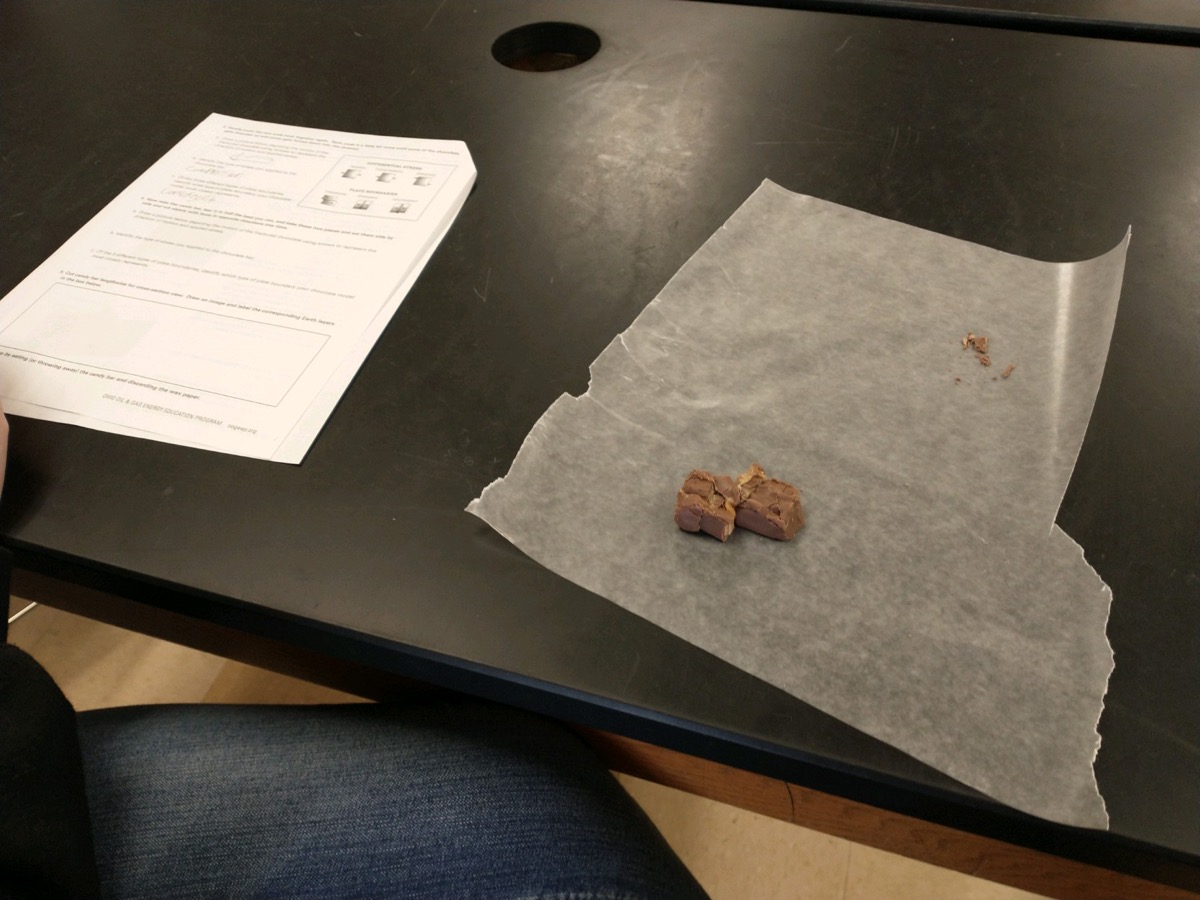Carbon cycle connections

"The movement of materials through ecosystems is part of the 7th grade life science standards," Mollie Kountz, science teacher at Jackson Middle School, said. "For the carbon cycle, my students played a board game to follow the journey of a carbon atom or compound containing carbon. This is traditionally all that I have done with them for the carbon cycle.
"This year the student played the game, but then I followed it up with the Geology lesson Tracking the Carbon. The students had to think about whether carbon was being produced or stored. The students then created their own journey for carbon that required them to think about what form the carbon was in, where the carbon was currently located, and how the carbon was moving. The conversations that occurred during this activity were much richer and more engaged than those during the board game. Moving forward, this is an activity that I will definitely use again!"
Carbon is the fundamental building block of life and an important component of many other chemical processes. Carbon atoms continually move through the Earth’s oceans, atmosphere, ecosystems, and crust. Processes that predominantly produce CO2 are called sources, and processes that take in or store CO2 are sinks (reservoirs). In the Tracking the Carbon activity, students trace CO2 as it moves between these systems and record its movement.
Experience these geology lessons yourself at a teacher workshop! Visit our website for more information.

